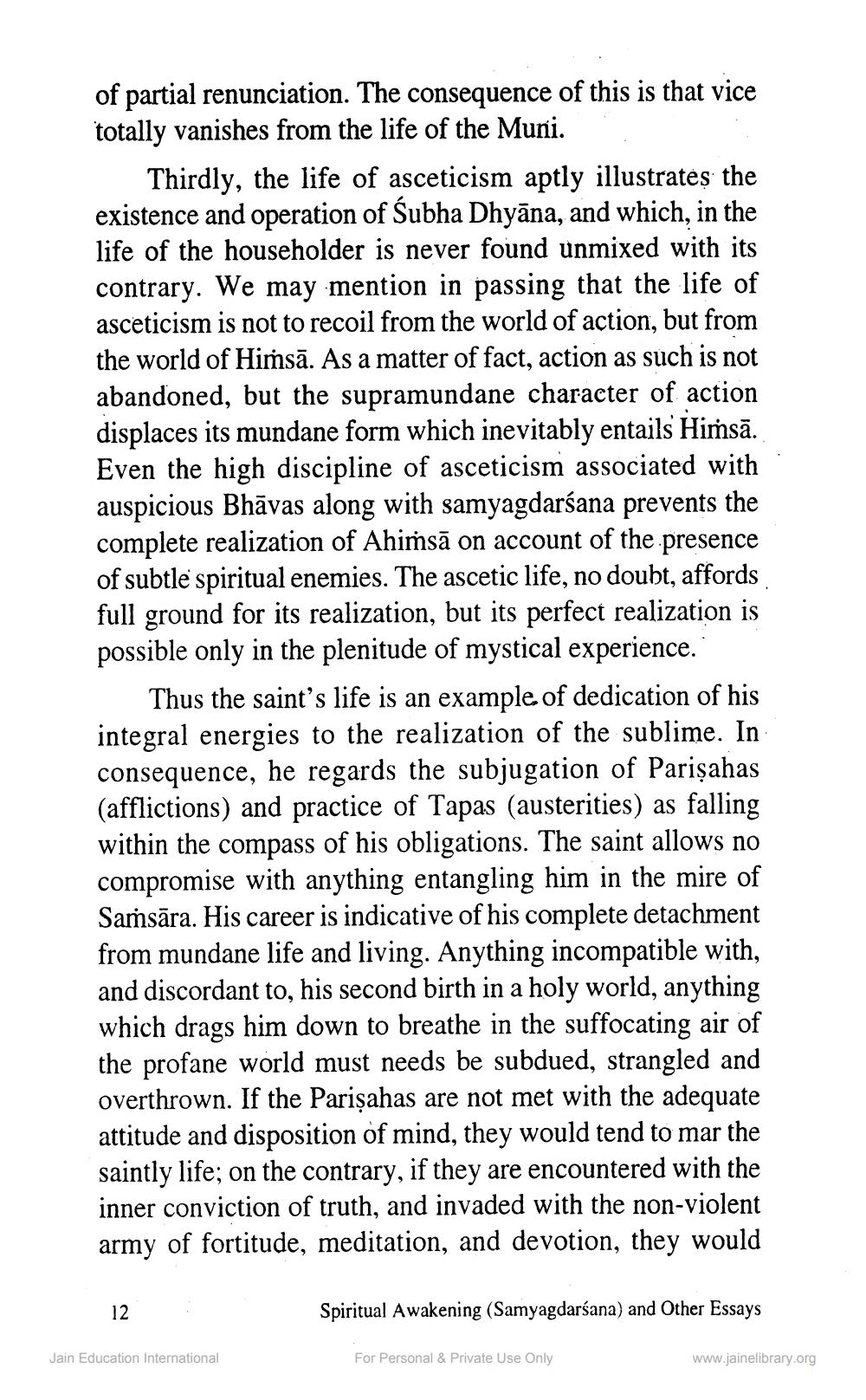________________
of partial renunciation. The consequence of this is that vice totally vanishes from the life of the Muni. .
Thirdly, the life of asceticism aptly illustrates the existence and operation of Subha Dhyāna, and which, in the life of the householder is never found unmixed with its contrary. We may mention in passing that the life of asceticism is not to recoil from the world of action, but from the world of Hiṁsā. As a matter of fact, action as such is not abandoned, but the supramundane character of action displaces its mundane form which inevitably entails Hiṁsā. Even the high discipline of asceticism associated with auspicious Bhāvas along with samyagdarśana prevents the complete realization of Ahiṁsā on account of the presence of subtle spiritual enemies. The ascetic life, no doubt, affords full ground for its realization, but its perfect realization is possible only in the plenitude of mystical experience.
Thus the saint's life is an example of dedication of his integral energies to the realization of the sublime. In consequence, he regards the subjugation of Parişahas (afflictions) and practice of Tapas (austerities) as falling within the compass of his obligations. The saint allows no compromise with anything entangling him in the mire of Saṁsāra. His career is indicative of his complete detachment from mundane life and living. Anything incompatible with, and discordant to, his second birth in a holy world, anything which drags him down to breathe in the suffocating air of the profane world must needs be subdued, strangled and overthrown. If the Parişahas are not met with the adequate attitude and disposition of mind, they would tend to mar the saintly life; on the contrary, if they are encountered with the inner conviction of truth, and invaded with the non-violent army of fortitude, meditation, and devotion, they would
Spiritual Awakening (Samyagdarśana) and Other Essays
Jain Education International
For Personal & Private Use Only
www.jainelibrary.org




